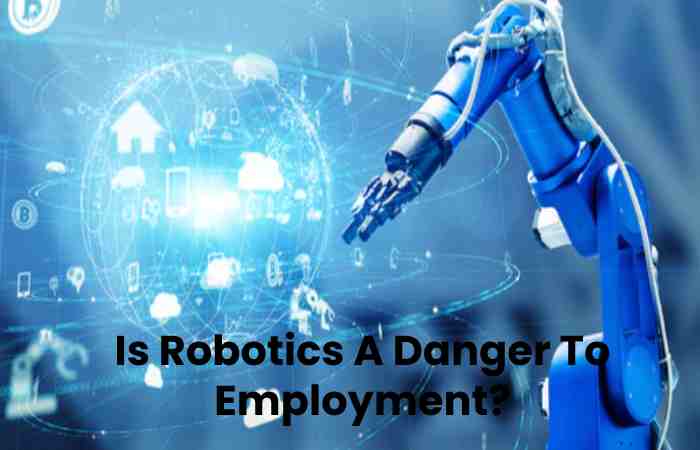If you are interpretation this, you may wonder what robotics is and what it is for today’s society. We can define the meaning of robotics as a science that brings together different technological fields, with the main objective of designing robotic machines capable of performing various automated tasks depending on the capacity of its software.
Robots have remained implemented in the industry for decades, but today, they are crucial in the implementation of Industry 4.0. On the one hand, due to the automation of repetitive tasks and the execution of others that are difficult, exhausting, or dangerous for humans.
Table of Contents
What Is A Robot?
By definition, a robot is a programmable automatic machine capable of performing certain operations autonomously and replacing human beings in some tasks.
The term “robot” remained popularized by Karel Čapek’s work RUR (Rossum Universal Robots) in 1920. In the English translation of the play, the Czech word “robota,” which means forced labor or worker, was translated into English like a robot.
The robots we know today remained developed after the Second World War due to the increasing demand for automation in the automotive industry. Before, robots were nothing more than tools for automation, programmed to perform specific tasks: transporting, loading, unloading, welding, etc. There are currently so-called intelligent robots, programmed to detect any alteration in their environment and act accordingly.
Is Robotics A Danger To Employment?
A high percentage of jobs run the risk of being automated by robots. It is the biggest drawback of the implantation of robotic devices in workplaces since it will cause massive job destruction (mainly in the industrial and services sector).
It is a difficult reality to hide. However, according to the report The Future of Jobs 2018 (The Future of Jobs 2018) prepared by the World Economic Forum, 75 million jobs will disappear in the coming years. But to compensate, the arrival of technologies such as automation will allow another 133 million new roles to emerge until now unknown. Companies will need to invest in training and retraining for their employees as there will always have to be a human person to control, supervise, review and program these robots.
Advantages and disadvantages of Robotics:
Some of the benefits of using robotics are:
- Robots don’t tire like humans and can work 24 hours a day, 365 days a year.
- They are stronger and more precise than the human hand.
- A significant cost reduction remains achieved because robots can perform jobs in less time and space, shortening the time a product passes through the assembly line without affecting the quality of the product.
- Increased productivity remains achieved through the more efficient use of all resources and the little margin for error of a well-configured robot.
- Simplifying robotic programming makes it easier for workers to operate and monitor it with prior training.
It is why robotics is essential in many companies.
Robotics Applications:
The progress of robotics is unstoppable and has already advanced by leaps and bounds. Robotics technology is used in many more fields than we think and practically all work areas since they offer a wide range of solutions.
Health Field:
With robotic-assisted surgery in medicine, a series of very complex and highly precise surgical interventions have remained performed. We can find the example of the robot known as Da Vinci. With which it has been possible to eliminate some of the dangers that human hands carry out the surgery.
Home Appliance Industry:
Another well-known use of robotics that is closer to us and we see every day is small smart appliances. The famous vacuum cleaners programmed to clean and mop the floor are a clear example of this.
Other Examples:
We can also see other interesting and successful robotics applications in the world of transport with driverless cars. In the military industry with autonomous aircraft. In large multinationals with huge automated logistics centers. Or the banking market, with the design of systems based on artificial intelligence, serves to review contracts by themselves.
What Types Of Robots Are There?
According to the era or generation in which they remained developed, there are four types of a robot :
First-Generation Robots:
They are the most basic robots: they are intended for manipulation and have mechanical systems that can work in two ways: by fixed or variable sequence.
Second-Generation Robots:
They are robots that learn. That is, they have a learning system that consists of repeating a sequence of movements previously carried out and programmed by an operator (that is, a human being) that indicates. On the one hand, the process and, on the other, its execution.
Third Generation Robots:
In this case, the operator remains replaced by a computer. In this way, the computer determines the movements and executes the programming orders.
Fourth-Generation Robots:
They are the most advanced and have remained used for several years in the most pioneering companies. In this type of robot, IoT and Artificial Intelligence remain used. These are intelligent robots: they have a greater number of sensors. There is a double direction of information, so the computer can receive real-time information and anticipate your needs.
Related Sereaches:
[advantages and disadvantages of robots pdf]
[advantages and disadvantages of robots essay]
[advantages and disadvantages of robots ppt]
[advantages and disadvantages of robots essay ielts]
[disadvantages of robots in industry]
[disadvantages of robots in the workplace]
[advantages of robots wikipedia]
[disadvantages of robots can be]
